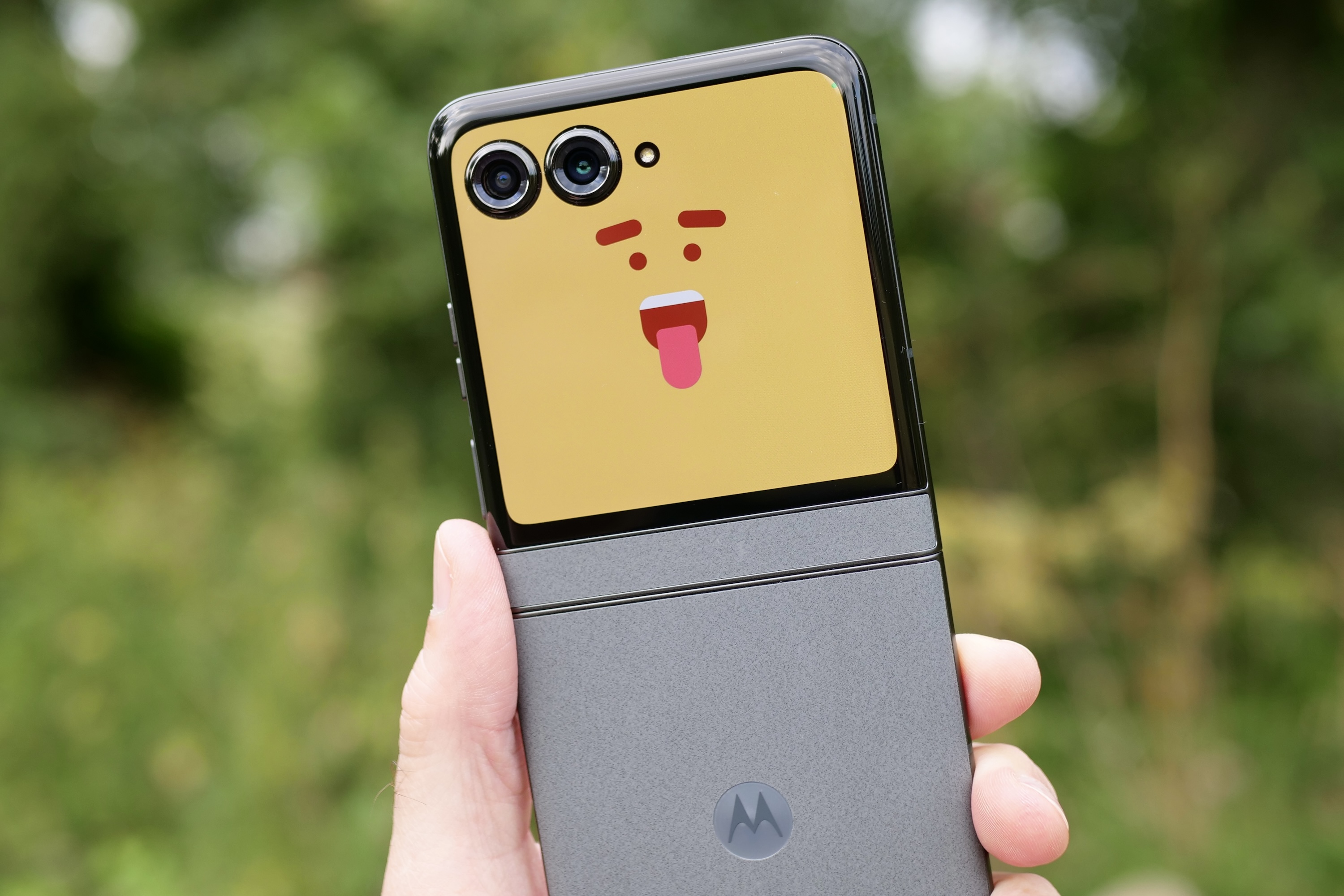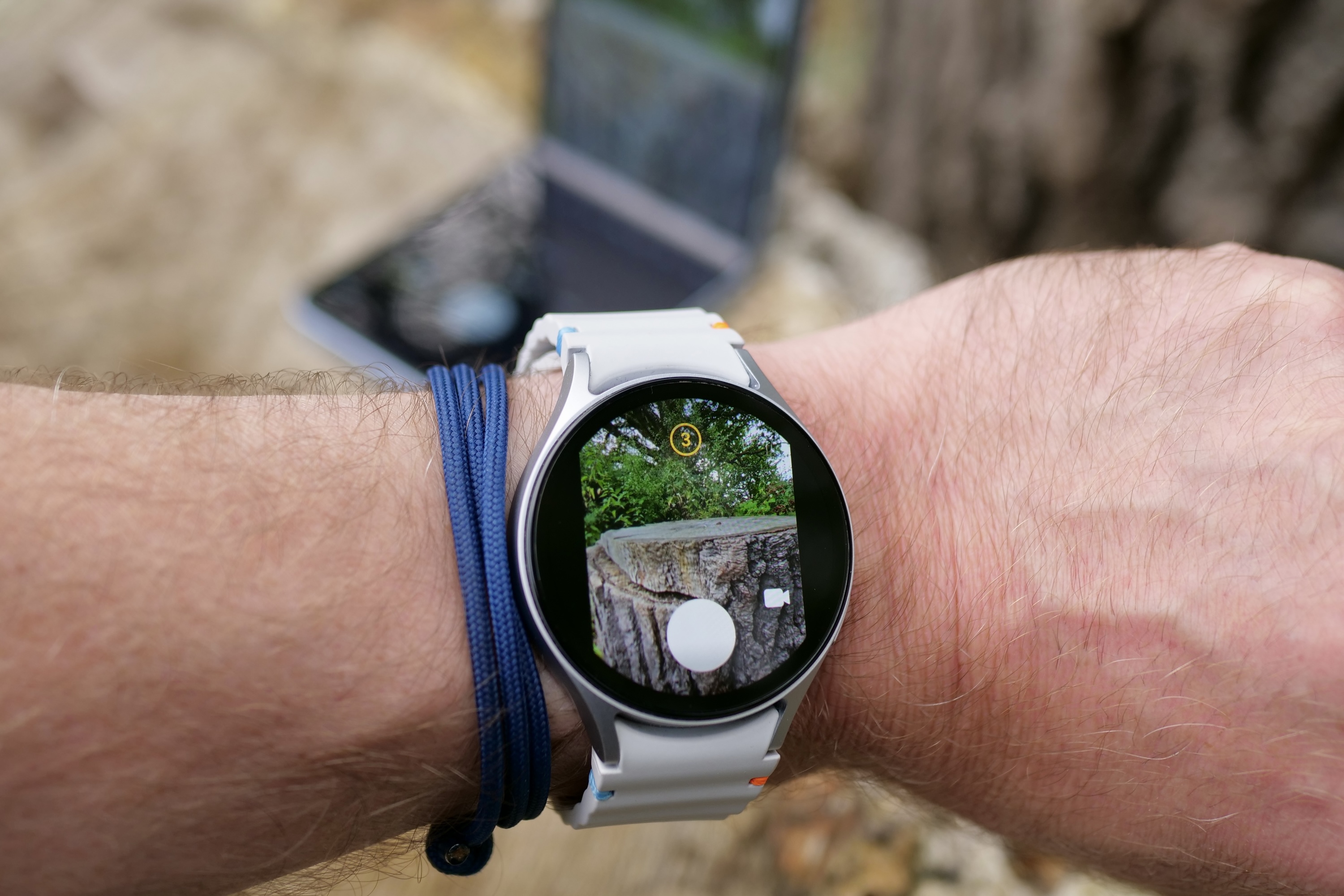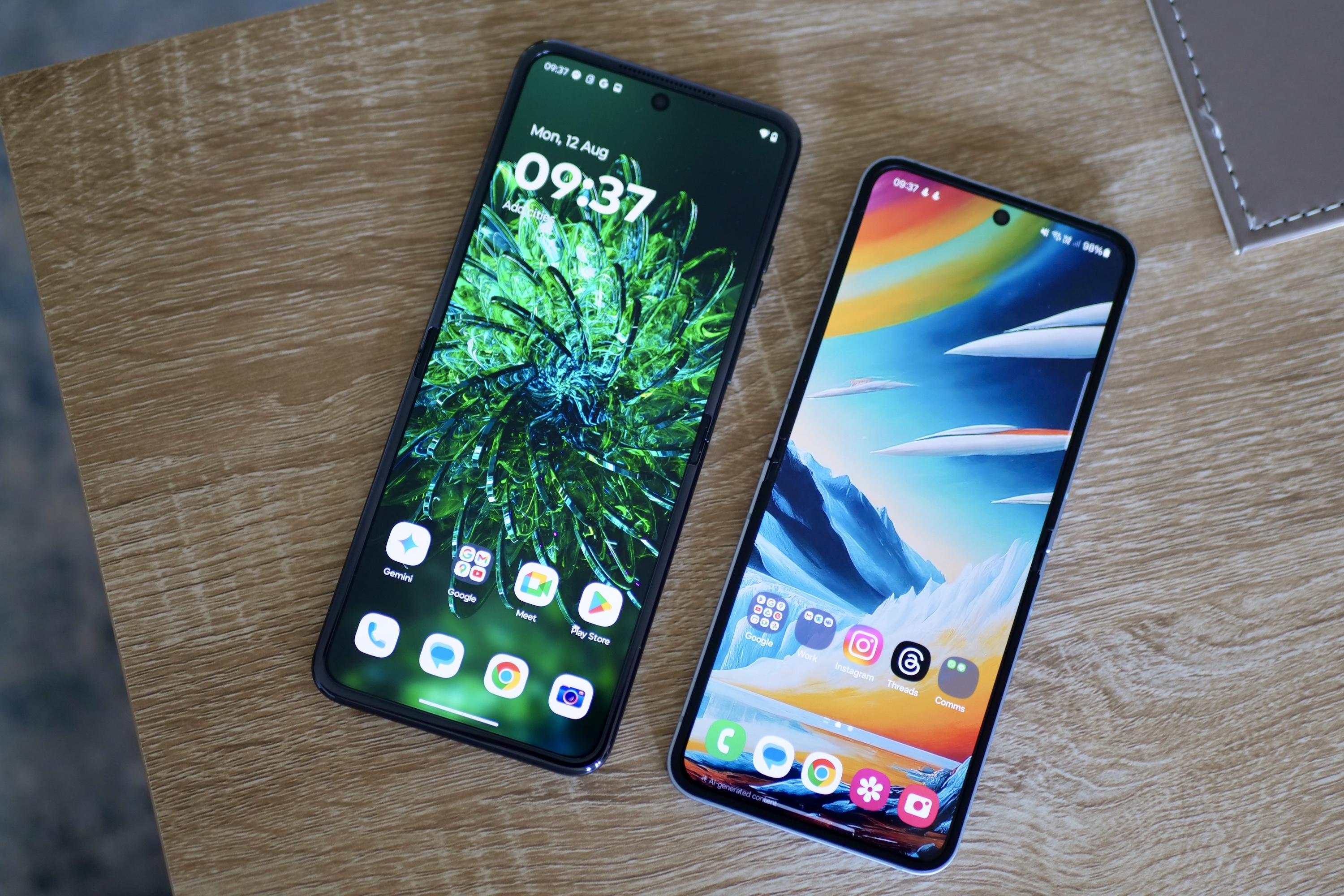You’ve seen the Samsung Galaxy Z Flip 6. You have looked at it enviously but get put off by the price that’s even higher than it was last year. I know the feeling. But then you see the Motorola Razr 2024, another really good folding phone that could be yours for a lot less. While there are various specification differences, the cameras are closely matched on paper, which will likely come as a surprise given the price difference.
Should you choose the Razr 2024 over the Galaxy Z Flip 6 if you want to take good photos, or is it the other way around? I found out when I put the pair to the test.
The camera specs

Samsung updated the Galaxy Z Flip 6’s cameras, and by doing so, it recently beat the Galaxy Z Flip 5 in a camera test, showing the positive improvements working in reality. The Qualcomm Snapdragon 8 Gen 3 processor works behind the scenes, controlling a 50-megapixel main camera with an f/1.8 aperture and optical image stabilization (OIS). It’s joined by a 12MP 120-degree field-of-view wide-angle camera.
There’s no telephoto camera on the Z Flip 6, and Samsung doesn’t even encourage you to use a digital zoom, as the camera app only offers shortcuts to the main and wide-angle cameras. However, there are fun features like Flex Mode, where the cover screen can be used as a viewfinder to take selfies with the rear camera. Plus, if you wear a Galaxy Watch, it can be used as a remote viewfinder, too.
The Motorola Razr 2024 also has a 50MP main camera with OIS and an f/1.7 aperture, along with a 13MP wide-angle camera with a 120-degree field-of-view. One of the biggest differences between the two phones is the processor, as the Razr 2024 uses a MediaTek Dimensity 7300X chip. You can also use the cover screen as a viewfinder, plus there’s a fun option to have a cartoon face show on it to encourage your kids to look at the screen for a photo. The photos below were taken over several days with the camera on auto and have been resized for friendlier online viewing.
Main camera
- 1. Motorola Razr 2024
- 2. Samsung Galaxy Z Flip 6
There are several major differences between the Z Flip 6 and the Razr 2024 cameras, and most can be seen in this first image. The Motorola phone has an overeager HDR mode, which I found kicked in most of the time, while Samsung’s camera treats scenes differently. Its photos have a deeper contrast and are smoother than the Razr’s photos, which have a blockiness to them when you crop the image down. It’s not unpleasant, but there is a marked processed look to the Razr’s photos. I left HDR on auto for both phones throughout the test. If I were to run it again, I may turn it off entirely on the Motorola phone.
- 1. Motorola Razr 2024
- 2. Samsung Galaxy Z Flip 6
In the second photo, the Razr 2024’s different exposure levels show up. While there’s plenty of detail on the petals and the focus is sharp (a trend we’re going to see again), the Z Flip 6’s depth of field is smoother, the colors more natural, and the overall scene subtler. Going back to the focus, the Razr 2024 has a noticeably wider focal area than the Z Flip 6, which concentrates on the center of the scene.
- 1. Motorola Razr 2024
- 2. Samsung Galaxy Z Flip 6
These focal differences are very evident in the next photo of the yellow Corvette. The Razr keeps the vast majority of the scene in focus, including the other car and the building’s roof in the background, while the Z Flip 6 focuses on the rear three-quarters of the car and the rear wheel. Even the Corvette script is blurred. I like the Razr’s focus, but the Z Flip 6’s photo has the same preferable smoothness and color accuracy seen in the first photo.
- 1. Motorola Razr 2024
- 2. Samsung Galaxy Z Flip 6
The Galaxy Z Flip 6 wins back a lot of points when faced with a general landscape scene. The camera’s natural colors and balance really highlight how aggressive the Razr 2024’s HDR effect is and how it can make a photo look unrealistic. Crop the image down, and there’s a lot more detail in the Z Flip 6’s background, too. It makes choosing a winner difficult, as the Razr 2024’s wider focus is my preference, but the Z Flip 6’s photos are more detailed, and I prefer the color treatment, too. I’d live with the Z Flip 6’s central focal bias in this case, but it’s close.
Winner: Samsung Galaxy Z Flip 6
Wide-angle camera
- 1. Motorola Razr 2024 wide-angle
- 2. Samsung Galaxy Z Flip 6 wide-angle
The two wide-angle cameras are also quite hard to judge. The Galaxy Z Flip 6 has a slightly wider angle, so it’s better at showing scale, but the photos from both have about the same level of detail. The Razr 2024’s photos can show slightly more edge enhancement than the Z Flip 6’s, which is sometimes better at judging colors at exposure. There are pros and cons to both here.
- 1. Motorola Razr 2024 wide-angle
- 2. Samsung Galaxy Z Flip 6 wide-angle
You can see examples of the Z Flip 6’s wider angle and the way it handles colors in the photo of the car’s engine bay above, and I do prefer it to the Razr 2024’s photo. However, in the photo of the church, the Razr creates a moodier, more atmospheric shot, and it better exposes detail in the path and stonework, too. Unfortunately, the spire shows where the Razr resorts to edge enhancement to get the shot.
- 1. Motorola Razr 2024 wide-angle
- 2. Samsung Galaxy Z Flip 6 wide-angle
In the wide-angle photo of the lake, the Razr again gets the moodier shot, and its settings give the water a natural tone in keeping with the overall scene. The Z Flip 6 goes in the opposite direction, deemphasizing the colors and using a different exposure. It captures the scene well and crucially avoids most of the noise seen in the sky and clouds in the Razr’s photo, which lets it down. It’s hard to split the two wide-angle cameras, with neither consistently impressive but both taking acceptable photos.
Winner: Draw
2x zoom
- 1. Motorola Razr 2024 2x zoom
- 2. Samsung Galaxy Z Flip 6 2x zoom
Neither phone has an optical telephoto zoom, but one camera does have a 2x shortcut in the app, encouraging you to use it. Unfortunately, it’s the phone that you definitely should not be using the 2x zoom mode on. I’m only going to show a single example of the 2x zoom shots here, as the story is the same across all of them I took, and it’s that the Z Flip 6 has a far superior 2x mode than the Razr 2024.
I don’t think the Razr’s HDR effect helps the final image, but it’s clear the Z Flip 6 packs so much more detail into its photo, and it is much sharper, too. Crop down, and the sheep is pixelated in the Razr’s photo but surprisingly sharp and in focus in the Z Flip 6’s. Samsung doesn’t push the 2x mode at all, but it’s highly usable.
Winner: Samsung Galaxy Z Flip 6
Portrait mode
- 1. Motorola Razr 2024 Portrait mode
- 2. Samsung Galaxy Z Flip 6 Portrait mode
I’ll spoil the conclusion of this particular section early, as it ends up in another draw. I’m saying it now because I want to show where the Razr 2024 really impressed against the Z Flip 6 — and also where it later went completely wrong. Across various Portrait mode shots, neither phone always got the shot right. The thistle is a great example, as I wasn’t expecting either to do very well, but the Razr 2024 did a fantastic job of capturing the prickly head and the leaves, while the Z Flip 6 fumbled around trying to separate the plant from the background.
- 1. Motorola Razr 2024 Portrait mode
- 2. Samsung Galaxy Z Flip 6 Portrait mode
Unfortunately, the Razr 2024 didn’t always get it right. The Z Flip 6’s depth of field in the car photo is just right, while the Razr 2024 makes the image too flat to appear natural — especially as the windshield is blurred out. The Z Flip 6’s photo is also more sharply focused. However, neither consistently beat the other, hence this category being a draw.
Winner: Draw
Night mode
- 1. Motorola Razr 2024 Night mode
- 2. Samsung Galaxy Z Flip 6 Night mode
The two phones have been very close together throughout the comparison, resulting in several rounds drawn due to poor photos on both sides. Night mode is a serious test of the processor and software, though, so let’s see how they do here. The first photo was taken in very-low-light conditions, and the photos need little explanation for you to see which is better. The Z Flip 6’s image is sharp and defined with only minimal noise, while the Razr 2024 keeps things “realistic” to the conditions, but it’s not a photo anyone would choose to take.
- 1. Motorola Razr 2024 Night mode
- 2. Samsung Galaxy Z Flip 6 Night mode
In the second photo, the Razr 2024 fails to isolate colors and smudges detail. Once again, the HDR effect activates, giving the scene an artificial look. The Z Flip 6’s photo is sharp and defined. It doesn’t always take terrible photos, though, as we can see in the next photo with the various plants in pots for sale.
- 1. Motorola Razr 2024 Night mode
- 2. Samsung Galaxy Z Flip 6 Night mode
The two cameras capture the colors similarly, but the Z Flip 6’s exposure helps it capture more detail and definition. The Razr 2024 captures the hanging sign exceptionally well compared to the Samsung phone, with all the words readable when cropped down. This couldn’t help it win here, though, as the Galaxy Z Flip 6 consistently took better low-light photos than the Razr 2024.
Winner: Samsung Galaxy Z Flip 6
There’s a clear winner

The Motorola Razr 2024 is a cheaper phone to buy than the Samsung Galaxy Z Flip 6, but it’s worth paying the extra if you want to take the best photos. The Samsung phone has beaten its rival in this comparison. It has won three categories, and the rest have been draws, ensuring it easily wins. They’re all the categories that really matter, too — main camera, 2x zoom, and Night mode.
However, while the Razr 2024 lost, it was never really outclassed except for the Night mode, and a lot of that comes down to the Z Flip 6’s more powerful processor. If you want to share main camera and wide-angle camera photos online, then Motorola’s aggressive HDR mode may be preferable. Do think about how you’re going to use the camera before making your final decision, as there’s a considerable amount of money to be saved if it’s better for your needs.
After previous years, when complaints against the Z Flip series’ cameras were rife, Samsung has made a considerable effort to get it right for the Z Flip 6. It already won a camera test against its predecessor and has now defeated one of its primary alternatives. Yes, you can save some money by choosing the Razr 2024, but you may regret it if you want to really get the most from the camera.
































